Sugar
Introduction
BCM GLOBAL TRADER has enter in contract with multiple refineries and resellers as a leading global supplier of sugar .
The refinery, operates in the domestic and international market for sugar and, honoring their genuine commitment to excellence in the production and delivery of its products
 Currently has own areas of crops is equivalent 97,000 hectares |
 It has its own water treatment plant. |
 Boiler has a cogeneration capacity of 200 TON. |
 |
Our Products
REFINED WHITE CANE SUGAR – ICUMSA 45 RBU to be delivery in polyethylene bags of 50kgs export style.
—POLARIZATION 99.80% DEGREES MIN
—ASH BY ELECTRICAL CONDUCT 0.04% MAX (ON DRY WEIGHT BASIS)
—ASH CONTENT 0.08 MAX
—MOISTURE 0.04% MAX
—ICUMSA 45 RBU MAX, (BRAZIL S.G.S. SCALE)
—SOLUBILITY 100% DRY AND FREE FLOWING
—COLOR SPARKING WHITE
—ICUMSA MAXIMUM 45 ATTENUATION INDEX UNITS (ICUMSA METHOD NO.: 4-1978)
—RADIATION WITHIN CS-137 OF 50 BQ PER KG
—GRANULATION FINE CRYSTAL
—CROP LATEST
Product:

WHITE REFINED SUGAR ICUMSA 45 RBU in 50kgs bags, in the amount of 70,000,000 (seventy million - in bags of 50 kg / year) or 3,500,000,000 billion (three billion five hundred million kg / year) refined sugar ICUMSA 45 WHITE RBU, to be delivered in polyethylene bags export model 50kgs.
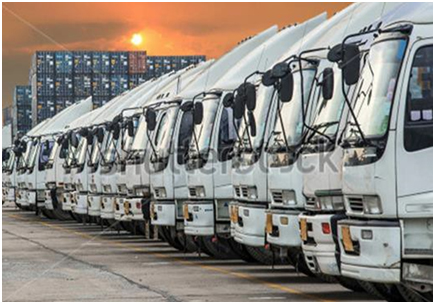
Own fleet with 300 trucks.
A state-owned railway line passes inside the farm
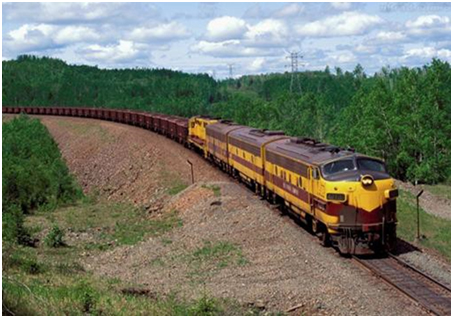
It has a distribution center in the Porto de Santos.
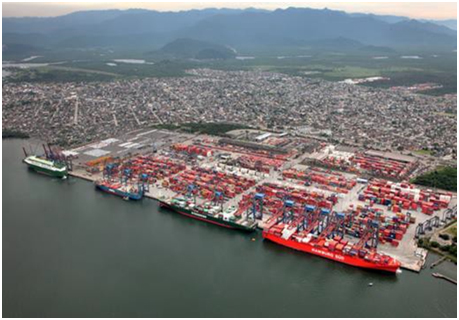

SGS S.A. - Société Générale de Surveillance SGS S.A. - Société Générale de Surveillance
6461
SUGAR ASSOCIATION OF LONDON SUGAR ASSOCIATION OF LONDON
CB CONTROL INSPEÇÕES MARÍTIMAS CB CONTROL INSPECTIONS MARITIME

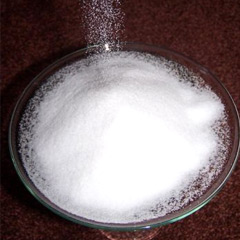 About ICUMSA
About ICUMSA
ICUMSA (International Commission for Uniform Methods of Sugar Analysis) is a world-wide body which brings together the activities of the National Committees for Sugar Analysis in more than thirty member countries.
Work is carried out under various Subjects each headed by a Referee.
ICUMSA is the only international organisation concerned solely with analytical methods for the sugar industry. In addition to use by that industry, ICUMSA methods are recognised by authorities such as the Codex Alimentarius Commission, the OIML, the EU, and the US Food Chemicals Codex.
Methods are recommended for Tentative (T) approval by ICUMSA in the first instance. Upon meeting all the Commission's requirements, methods are accorded Official (O) status. Methods which are demonstrably useful and have found an established application, or which do not lend themselves to collaborative testing, are given an Accepted (A) status. Details of how the status of Methods has been established may be obtained by reading the relevant Proceedings.
ICUMSA 45
Sugar trading features heavily in futures trading, and many crops are sold years before they are actually grown, sometimes up to three years before the sugar cane is even planted. Brazil refines relatively little of its sugar for export, so newcomers to the market will often find that much Brazilian ICUMSA 45 has already been sold quite some time before it was produced. For this reason, buyers looking to purchase large amounts of sugar, especially of ICUMSA 45, but also lower grade sugar often run into difficulties sourcing a reliable supplier.
According to the Brazilian SGS method of testing, ICUMSA 45 sugar is the highest quality sugar available on the market today. The quality of sugar is determined by a system devised by ICUMSA (International Commission For Uniform Methods Of Sugar Analysis), which is an international body that has sought to standardize the measurements which are used to describe sugar, so that no matter where the purchaser lives, or where the sugar source is located, an understanding of the type and quality of the sugar can be gained simply by quoting a rating, such as ICUMSA 45.
Sugar is tested according to a scale of whiteness. A simplistic way of looking at ICUMSA ratings is to say that the more white a sugar is, the more refined it is. ICUMSA 45 sugar is a sparkling white, highly refined sugar, suitable for human consumption and use in a wide range of food applications.
But how precisely is the whiteness of the sugar determined? In order for there to be an international standard, there needs to be a replicable scientific test to determine the ICUMSA rating of a sugar, and in order to achieve this level of precision and replicability, a colorimeter is used.
A colorimeter is a piece of equipment that determines which wavelengths of light are best absorbed by a substance. This is a useful piece of equipment, and a useful testing method because it is the ability of a substance to absorb various wavelengths of light that determines its color. Therefore, if a sugar is very white and very refined, it will absorb little light, something which can be quantified by the colorimeter.
To understand how this works in real world terms, think of how we humans perceive color. The human eye sees colors because certain objects absorb certain wavelengths of light, and reflect those which are not absorbed back to the eye. For example, a ball that appears blue to the human eye is simply made of a substance that absorbs all wavelengths of light apart from the blue ones, and reflects those back. The color, or rather the shade of white works similarly except for the fact that things which we perceive as being very white are actually absorbing almost no light, and instead are reflecting all the light back at the eye.
Sugar tested according to ICUMSA standards is usually tested with light wavelengths of 420 nm and 560 nm, and the standard colorimeter used to analyze sugar according to ICUMSA standards is a tristimulus colorimeter, an instrument which measures several readings along what is known as the visible spectrum (simply the spectrum of light that is visible to the human eye). The output reading is then based on how much light was absorbed by the sugar sample. A low reading, such as 45, indicates highly quality refined sugar which absorbs little light and appears very white to the human eye, whereas a high reading going into the 1000 + range indicates an unrefined raw sugar which absorbs much more light, and therefore appears brown and dark.
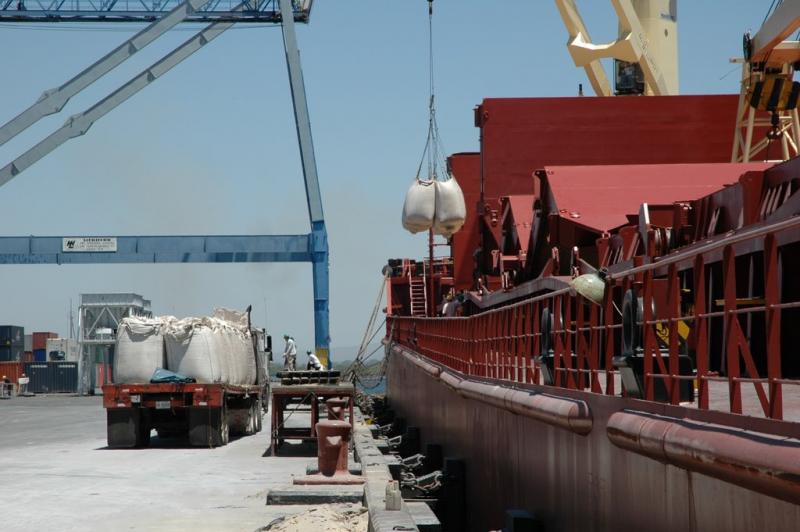
Granulated Refined Sugar – Industrial Standard
As a natural sucrose sweetener, presented in the form of solid crystals, the Guarani® granulated refined sugar is obtained through the spontaneous crystallization of a refined solution of sugar in water. It has the form of the ordinary crystal sugar, but it stands out for its light color and clearness, and it is considered as a “Premium” type sugar. It is one of the most consumed sugars worldwide, having recently been introduced in the domestic market.
Applications
A highly versatile product, capable of meeting the requirements of domestic, industrial and pharmaceutical applications. It stands out for its low color content, and it is widely used in the soda and transparent beverage industries, wherein the color (or absence of color) of the mixture is a significant factor for the product. Its purity and low susceptibility to microbiological contamination (practically sterile) makes this product one of the most indicated for drug manufacturing in pharmaceutical industries.
Trial |
Method |
Specifications |
Appearance |
Internal method |
White solid uniform crystalline free from extraneous matter |
Max. Arsenic (mg/kg) |
External analysis |
1 |
Max. Lead (mg/kg) |
External analysis |
1 |
Max. Condutimetric ash (% m/m) |
Internal method |
0,04 |
Max. copper (mg/kg) |
External analysis |
2 |
Max. total coliforms (NMP) |
Internal method |
(*) Absent (5) |
Max. color (UI) |
Internal method |
Available in two colors: 20 45 |
Max. iron (mg/kg) |
External analysis |
10 |
Max. mercury (mg/kg) |
External analysis |
0,05 |
Black spots (Nº/100g) |
Internal method |
5 |
Insoluble residue (Maximum Level) |
Internal method |
5 |
Taste and Smell |
Internal method |
Characteristic and free from unpleasant taste and smell |
Sucrose % (polarization ºZ ) min |
Internal method |
99,80 |
Max. moisture (% m/m) |
Internal method |
0,04 |
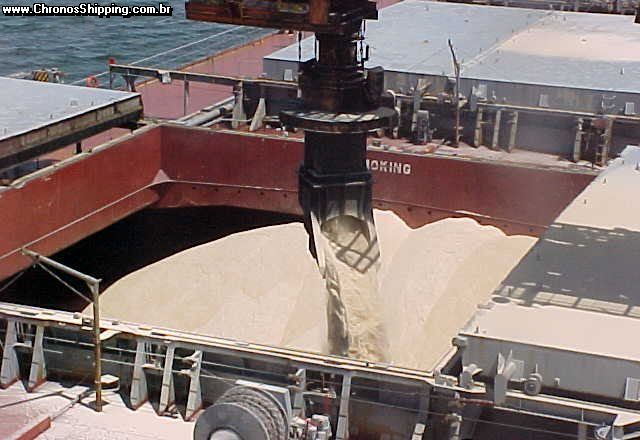
Sugar VHP (Very High Polarization)
SPECIFICATIONS: VHP BROWN SUGAR / ICUMSA 1 000. crop 2008-2009
Polarization: 97.8 degree to 99.2 degree
Ash Content: 0.15 % max
Color ICUMSA 600 to 1200 typical
Solubility: 95%
Free flowing
Color: Brown
Radiation: Within internationally acceptable limits
Granulation: 0.6 mm of regular square ( medium size)
Moisture: 0.15% max
Magnetic Particles: 10 MG/K
So2: 120 MG/K
Sulphur Dioxide: 60 MG/K MIN
Smell: Free from unusual or abnormal smells
Reducing Sugar: 0.05% MAX by weight
HPN Staph Aureus: NIL
MAX AS: 1 P.P.M
MAX PS: 2 P.P.M
MAX CU: 3 P.P.M
Substance Structure : Solid Brown Growing VHP Sugar
The bulk of the world’s VHP sugar is produced in Brazil from high sucrose sugar cane. In Brazil, most sugar cane is grown in the center south region adjacent to and in the Sao Paulo state. This region is well known for its large expanses of flat fields, fertile soils, and clement climate which are all ideal for growing sugar cane, which thrives in tropical or subtropical climates. Brazil is well known for spending much time and energy in the pursuit of better strains of sugar cane that grow faster and have higher sucrose contents than traditional forms of sugar cane which are still grown in many countries. This investment of time and money has paid off with high yield crops which are eminently suitable for the production of VHP sugar.
Sugar cane is generally planted in the summer months, left to grow between twelve and sixteen months, and then harvested in the cooler months. Typically the harvesting season in the Sao Paulo region of Brazil runs from May through to November.
VHP Sugar Production
There are several steps involved in the production of VHP sugar. First, the harvested cane must be shredded and cut in preparation for milling. The cane is then sent through rollers and subsequently through crushing devices that squeeze the juice out of the cane, separating it into two products, sugar juice, which will be refined into VHP sugar, and dry fibrous material known as bagasse, which will be recycled or used as fuel.
The sugar juice is then piped to a different part of the mill, where it is boiled in vacuum pans to remove excess water and concentrate the sugar content. Sugar dust crystals are then added to the juice to encourage the growth of sucrose crystals, which form around the dust crystals. When they are fully grown, both the liquid and the crystals are fed into a centrifugal chamber which spins the mixture at very high speeds, driving the liquid content away from the sugar crystals. What is left is high grade ‘A’ sugar and ‘A’ molasses (also referred to as first molasses). The high grade ‘A’ sugar is known as VHP.
The first molasses is then boiled again and subjected to a further crystal growth process. When crystals are grown, they are once more sent into the centrifugal chamber and spun to separate crystal from molasses. The results from this reprocessing are known as ‘B’ sugar, and second, or dark molasses. The second molasses does not contain nearly as much sucrose as the first molasses, and ‘B’ sugar is also of lower quality.
The process is then repeated again, this time with the products being final molasses, also known as ‘C’ molasses, or blackstrap molasses, and ‘C’ sugar. In some cases, the B and C sugars will then be remelted into a liquid solution and recrystallized to make high grade VHP sugar.
Production of VHP sugar requires quite a great deal of sugar cane, and it is estimated that for every hundred tons of sugar cane that is processed, only twelve tons of VHP sugar is produced.
VHP Sugar ICUMSA Ratings
Most VHP sugar falls somewhere between ICUMSA 600 and ICUMSA 1200 on the ICUMSA ratings scale. ICUMSA is an acronym, that stands for ‘International Commission For Uniform Methods Of Sugar Analysis’, which is the international body that regulates the way that sugar is analyzed.
The ICUMSA ratings system is based on a colormetric evaluation of sugar, and is carried out with an instrument called a colorimeter. This device is able to give a precise numerical reading which represents the coloration of the sugar sample which has been fed into it.
This is an effective means of testing the purity and quality of sugar because as sugar becomes more refined and pure, it loses the dark brown coloration associated with raw sugar which is relatively highly contaminated with biological agents and colorants, and becomes lighter and lighter. Highly refined sugar is a sparkling white color, whereas non VHP raw sugar can be ICUMSA 3000 or more. Because VHP sugar is so very high in sucrose and contains relatively few contaminants, it is a light brown color.
All sugar is tested according to how white it is, even brown sugar. Sugar is tested according to whiteness because the whiter sugar is, the more refining it has undergone, the less contaminants and chemicals are left in it, and subsequently the higher the quality it is. ICUMSA ratings are generally ‘reversed ratings’, meaning that the smaller the number is, the higher the quality of the sugar. This type of ICUMSA rating is known as the Brazilian SGS system, and it is the system under which we and most parts of the world trade sugar. In Europe this system is reversed, and ICUMSA 42 sugar actually refers to raw unrefined sugar. In order to simplify the sugar purchasing process, it is often simpler to ask for the Brazilian SGS rating of sugar.
But how does one know whether or not sugar is ICUMSA 150 or not? How can this be verified? The ICUMSA ratings test is carried out with a piece of equipment called a colorimeter, which is a device that gives a reading based on the wavelengths of light a substance absorbs.
ICUMSA 150 Sugar
ICUMSA 150 sugar is refined white sugar. Not quite as refined as ICUMSA 45 sugar, ICUMSA 150 sugar is still food grade and is often used by manufacturers making foodstuffs where the refining requirements for sugar are lower than those required for sugar sold direct to consumers. ICUMSA 150 sugar is in fact relatively highly refined sugar, especially when one considers that higher ICUMSA rated sugars are available, up to ICUMSA 4600 or more, but due to high levels of contamination and bacteria, these are not suitable for human consumption. ICUMSA ( International Commission For Uniform Methods Of Sugar Analysis) Ratings are ratings standardized by the aforementioned international body which reflect how refined sugar is, and thereby allow sugar to be traded across international borders with surety
Applications
It is a highly versatile product and may be employed in several applications, from domestic to industrial processes. Some of the several uses are: preparation of foods in general, soda, juice and sweetened beverage industries, brewery, baking, fondants, food industries, etc.
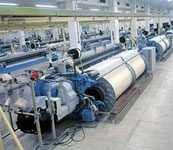 Brazilian Sugar Brazil is the world’s largest producer of sugarcane, sugar, and fuel alcohol and one of the most cost efficient producers of sugar. It is also the leading exporter of sugar. Sugar accounts for about 2 percent of the country’s gross national product, 17 percent of the country’s agricultural product, and employs over one million people.
Brazilian Sugar Brazil is the world’s largest producer of sugarcane, sugar, and fuel alcohol and one of the most cost efficient producers of sugar. It is also the leading exporter of sugar. Sugar accounts for about 2 percent of the country’s gross national product, 17 percent of the country’s agricultural product, and employs over one million people.
Sugarcane has replaced citrus and pasture areas in the State of Sao Paulo, Brazil's leading sugarcane producing state. According to Agricampus, a Brazilian Research Company, the investment to plant one hectare of sugarcane ($855) is approximately 73 and 36 percent lower than investments required to plant one hectare of citrus ($2,789) and pasture ($1,172), respectively. In addition, sugarcane profit margins assessed through historical prices are 7.31 percent compared to 6.01 percent for citrus and 3.27 percent for pasture. Brazil has about 320 million hectares of land and has the capacity to produce 30 million tons sugar and 18 billion litters of alcohol.
Brazil’s sugar industry is closely interconnected to the to the fuel alcohol industry. During the last few years about 50 percent of the sugarcane output, elimination of export taxes, low land prices, and partial harvesting mechanization.
Brazilian Sugar and Alcohol Production
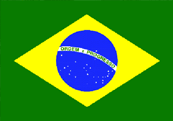 Northeast accounts for only about 16 percent of production (2008/09 crop). The cane is replanted about every six years in both of these regions. Thus, about 16 percent of the cultivated area is renewed each year. The production yields in Northeast region are low and the costs are high due to growing conditions. The Center-South region is highly productive because both the soils and climate are excellent. This region is regarded a one of the lowest cost producing areas in the world. The cost of producing raw sugar is generally estimated at 5 to 5.5 cents per pound for the Center –South.
Northeast accounts for only about 16 percent of production (2008/09 crop). The cane is replanted about every six years in both of these regions. Thus, about 16 percent of the cultivated area is renewed each year. The production yields in Northeast region are low and the costs are high due to growing conditions. The Center-South region is highly productive because both the soils and climate are excellent. This region is regarded a one of the lowest cost producing areas in the world. The cost of producing raw sugar is generally estimated at 5 to 5.5 cents per pound for the Center –South.
Exports
 Brazil is the world's largest exporter, averaging, in the last three years around 13.3 million tons and accounting for about 30 percent of total world exports.
Brazil is the world's largest exporter, averaging, in the last three years around 13.3 million tons and accounting for about 30 percent of total world exports.
The EU is the second largest exporter, averaging around 6 million tons. In contrast to the EU, to markets with domestically produce refined sugar. Primary markets for Brazil's raw sugar are Russia, Egypt, Iran, and the United Arab Emirates. The primary markets for the refined sugar are Egypt, Nigeria, India, Sri Lanka and Yemen.
Although Brazil owns a portion of the EU sugar quota and portion of the U.S. raw import quota, exports to these two markets are relatively small
CANE SUGAR ICUMSA 45 OR / AND ICUMSA 1000
SPECIFICATIONS
| COMMODITY | WHITE CANE SUGAR ICUMSA 45 RBU Attenuation index units (method # 4-1978) (crop 2008 - 2009) |
| POLARITY AT 20 DEG CENTIGRADE | 99.80 MIN. |
| SULPHATE & ASH CONTENT | 0.04% |
| MOISTURE | 0.04% |
| SOLUBILITY | 100.0% DRT AND FREE FLOWING |
| GRANULATION | FINE |
| ICUMSA | MAX. 45 ICUMSA WITHJ INDEX UNITS METHOD NO: 4619871 |
| SEDIMENTS | NONE |
| COLOR | SPARKING WHITE |
| CROP | 2008 2009 |
| MAGNETIC PARTICLES | MG/K 4. |
| SO2 | 70 MG/KG MAXIMUM |
| RADIATION | NORMAL W/O PRESENCE OF CESIUM OR IODINE: CERTIFIED |
| SMELL | FREE OF ANY SMELL & ALL PATHOGENS; STAPH AUREAS |
| REDUCING SUGAR | 0.05% MAX |
| SUBTANCE | SOLID CRISTAL MAXIMUM BY WEIGHT |
| MAX AS | 1 P.P.M. |
| MAX AS | 2 P.P.M. MAXIMUM. |
| MAX CU White Crystal Sugar: - polarization min. 99.70% - colour max. 150 Icumsa - ash max. 0.08% - moisture max. 0.08% |
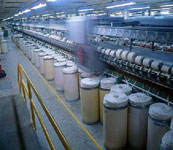 SPECIFICATIONS:
SPECIFICATIONS:
VHP – BROWN SUGAR / ICUMSA 1 000. crop 2008-2009
Polarization: 97.8 degree to 99.2 degree
Ash Content: 0.15 % max
Color ICUMSA 600 to 1200 typical
Solubility: 95%
Free flowing
Color: Brown
Radiation: Within internationally acceptable limits
Granulation: 0.6 mm of regular square ( medium size)
Moisture: 0.15% max
Magnetic Particles: 10 MG/K
So2: 120 MG/K
Sulphur Dioxide: 60 MG/K MIN
Smell: Free from unusual or abnormal smells
Reducing Sugar: 0.05% MAX by weight
HPN Staph Aureus: NIL
Sugar MAX AS: 1 P.P.M
MAX PS: 2 P.P.M
MAX CU: 3 P.P.M
Substance Structure : Solid Brown Crystal
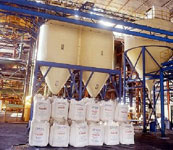 PACKING: NEW P.P. 50 KILOGRAM BAGS
PACKING: NEW P.P. 50 KILOGRAM BAGS
DELIVERY: CIF ASWP. (Any Safe World Port).
ORIGIN: BRAZIL
QUANTITY MAXIMUM: 2,500,000, MT EVERY YEAR FOR 10 YEARS.
QUANTITY MINIMUM: 12,500 MT.
SHIPMENTS: 12 500 MT - 25,000 MT – 50,000 MT BOAT
UNLOADING: 1500 MT PER DAY
INSPECTION: SGS (Societe General de Surveillance).
COMMODITY SHALL BE FREE FROM MOLD, UNNATURAL ODORS CHEMICALS AND INSECTS.
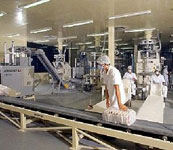 The white sugar shall be packed in 50 Kg and the brown sugar in 1 250 kg. Net wgt. / 50.172 Kg. Gross wt. Poly-lined new Jute Bags or acceptable equivalent. Each bag shall be secured to assure the safety of the commodity during ocean transport. Bags shall be branched in indelible ink or paint in the English language bearing marks: Product of Brazil, White refined cane sugar, Net Wt: 50.0 Kg; Current Crop. (XXX Bags per sling of XXXXX Kg. On each vessel, Seller shall at Seller's expense supply two (2%) percent of each shipment in empty bags of the same specifications.
The white sugar shall be packed in 50 Kg and the brown sugar in 1 250 kg. Net wgt. / 50.172 Kg. Gross wt. Poly-lined new Jute Bags or acceptable equivalent. Each bag shall be secured to assure the safety of the commodity during ocean transport. Bags shall be branched in indelible ink or paint in the English language bearing marks: Product of Brazil, White refined cane sugar, Net Wt: 50.0 Kg; Current Crop. (XXX Bags per sling of XXXXX Kg. On each vessel, Seller shall at Seller's expense supply two (2%) percent of each shipment in empty bags of the same specifications.
We are able and ready to prepare small quantities such as 1 kg – 2kg with packaging depending on the client’s choice at a very low price. The client will only have to provide the sample of the packaging, the logo in PDF format or CD, the size of the small bag and the quantity needed to be able to prepare a formal quotation.
PROCEDURES & PAYMENT
1. MT799 sent by the buyer – it’s nothing else but the readiness to send MT760 and it costs a little. So no risk at this point from the buyer side.
2. RWA – readiness to accept MT760 is the best banking proof that the seller is ready to accept the instrument by his bank. Also it means that his bank is ready to send POP and PB2%. And that information also is sent by the seller bank officer along with RWA.
So IN THIS POINT the buyer receives the banking legal and official confirmation on POP and PB.
POP and PB is already lodged in the bank and ready to be sent.
IF THE BUYER DOES NOT RECEIVE RWA HE DOES NOT SEND MT760! So no risk!
3. MT760 sent by the buyer.
4. POP and PB is sent by the seller.
5.MT 103 with SBLC is sent after SGS and BL.(full set of documents loading )
PAYMENT TERMS:
—CONTRACT GUARANTEE TO BE SUPPLIED BY BUYER'S BANK WITHIN 10 (TEN) BANKING DAYS. UPON BUYER'S BANK SWIFT MT799 WITH REDINESS TO SEND MT760 AND UPON SELLER’S BANK CONFIRMATION RWA LETTER OF READINESS TO ACCEPT MT760, A SWIFT MT 760 (SBLC) IS SENT TO THE SELLER’S BANK, BEING A CONFIRMED, NOT ACTIVE IRREVOCABLE, TRANSFERABLE, AUTO-REVOLVING CORRESPONDING TO ONE MONTH CONTRACT VALUE, (12,500 MT AT USD 400.00 /MT) WHICH IS EQUAL TO A TOTAL OF USD$ 5,000,000.00 (FIFTY MILLION DOLLARS) 100% SUBMITTED AND RELEASED INTO SELLER’S BANK.
—AUTOMATIC ACTIVATION OF FINANCIAL INSTRUMENT IS DONE BY SENDING 2% PERFORMANCE BOND AND PROOF OF PRODUCT TO THE BUYER'S BANK.
—THE BANK GUARANTEE MUST TO BE VALID FOR A PERIOD OF 11 (ELEVEN) MONTHS. SELLER’S BANK WILL ACTIVATE THE FINANCIAL INSTRUMENT WITHIN 10 (TEN) BANKING DAYS AFTER SENDING POP AND 2% PB.
—PAYMENT AT SIGHT 100%, EACH SHIPMENT IS PAID BY MT103 UPON SUBMISSION OF ALL SHIPMENT DOCUMENTS. THE BUYER RECEIVES INVOICE WITH THE VALUE OF EACH SHIPMENT MONTHLY. THE VALUE OF ONE MONTH’S INVOICE WILL BE EQUAL WITH USD$ 5,000,000.00 (FIFTY MILLION DOLLARS), ACCORDING THE CONTRACT, THE WIRE TRANSFER WILL BE ISSUED FOR EVERY INVOICED VALUE.
Clause 10. PROCEDURES:
1. THE SELLER ISSUES FCO (FULL CORPORATE OFFER) TO BUYER. BUYER SIGNED AND SEAL THIS FCO AND RETURN TO SELLER FCO;
2. SELLER ISSUES DRAFT CONTRACT WHICH WILL INCORPORATE FULL TERMS, CONDITIONS AND DELIVERY SCHEDULE;
3. BUYER SIGNS AND SEALS EACH PAGE OF FINAL CONTRACT AND RETURNS TO SELLER. SELLER SIGNS AND SEALS FINAL CONTRACT AND SEND BACK TO BUYER; SELLER AND BUYER LODGE THE FINAL CONTRACT TO THEIR RESPECTIVE BANKS;
4. SELLER ISSUES PROFORMA INVOICE;
5. WITHIN 10 (TEN) INTERNATIONAL BANKING DAYS THE BUYER’S BANK ISSUES MT799 WITH READINESS TO SEND MT760. THE SELLER'S BANK ANSWERS WITH RWA AND THE BUYER'S BANK SENDS MT760 WITH A NON OPERATIVE, IRREVOCABLE, TRANSFERABLE, AUTO REVOLVING, CONFIRMED (BY TOP 50 WORLD BANK) UNCONDITIONAL, UNRESTRICTED, UNENCUMBERED, SBLC TO SELLER’S BANK;
IF THE BUYER DOES NOT RECEIVE RWA HE DOES NOT SEND MT760 WITH SBLC.
6. WITHIN 10 (TEN) INTERNATIONAL WORKING DAYS THE SELLER’S BANK ISSUES TO THE BUYERS BANK PB (PERFORMANCE BOND GUARANTEE) 2%, AND POP (PROOF OF PRODUCT) MAKES THE SBLC OPERATIVE.
7. THE SELLER’S BANK SHALL SEND TO THE BUYER’S BANK A COMPLETE SET OF SHIPPING DOCUMENTS FOR CONFIRMATION AND VERIFICATION THEN UPON RECEPTION OF THE ORIGINAL DOCUMENTS WITHIN 5 (FIVE) BANKING DAYS PAYMENT AT SIGHT (100% MT-103) IS RELEASED.
8. SHIPMENT BEGINS/COMMENCES WITHIN 20/40 DAYS FROM RECEIPT OF 100% OPERATIVE SBLC AND MT 103.